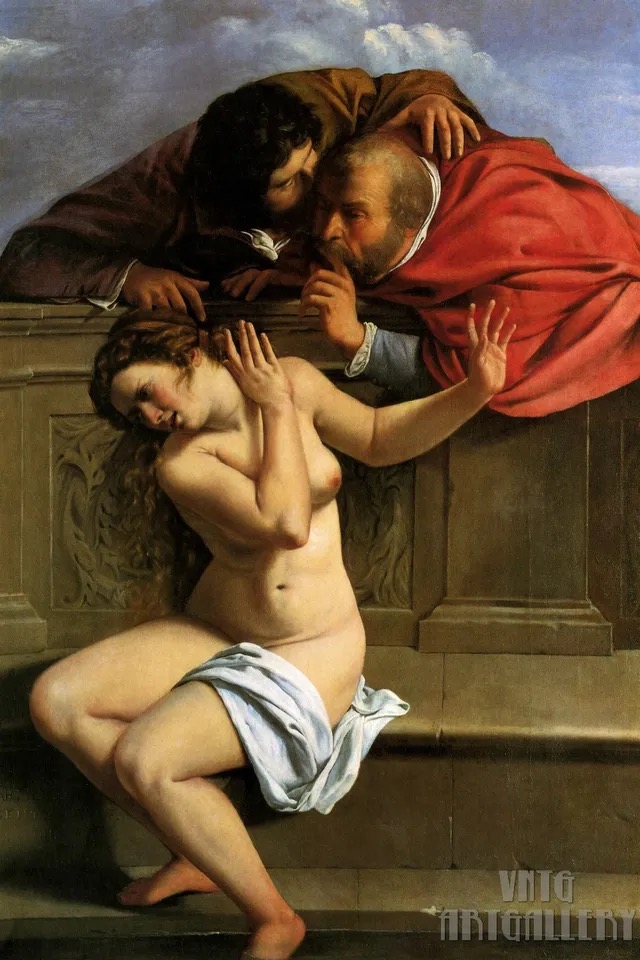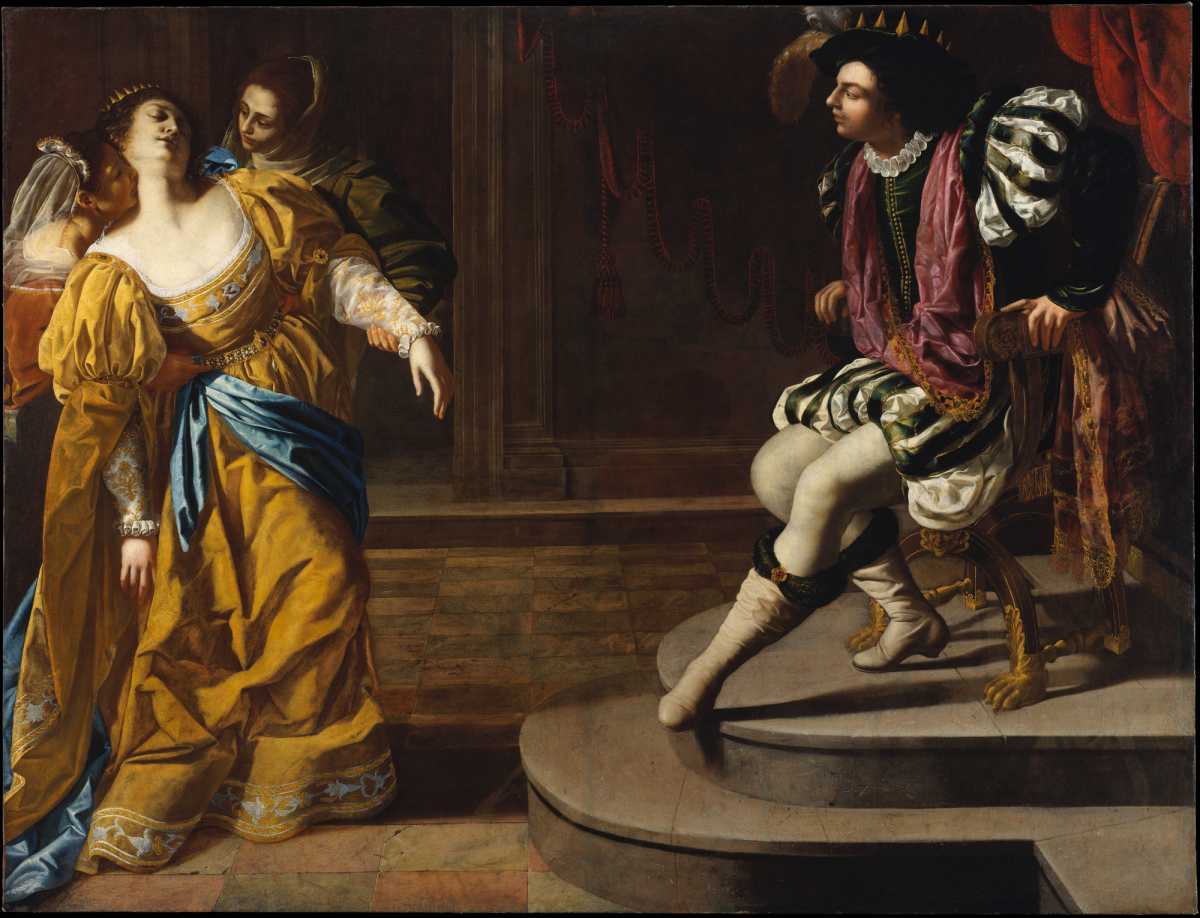Art is a crucible of power, pain, and transcendence, where the boldest voices rise to immortalize truths too raw for silence. Artemisia Gentileschi, wielding her brush like a sword, claimed her place on this battlefield.
As the only female follower of Caravaggio, she absorbed his chiaroscuro and dramatic intensity, yet transformed his influence into her own distinct vision. Her work, unapologetically feminist in spirit, remains a testament to defiance and resilience. Her legacy, steeped in both triumph and struggle, converges with another sisterhood erased by history—the female philosophers of Ancient Greece.
These women, like Gentileschi, dared to challenge societal confines, shaping thought and culture despite systemic silencing. Together, they represent a poetic renaissance that continues to demand recognition.
The bold phoenix of baroque
Artemisia Gentileschi was not merely a painter; she was a revolutionary who carved her name into the annals of art history with raw audacity.
Born in Rome in 1593, she honed her craft under her father, Orazio Gentileschi, surpassing him in technical skill and creative depth. Her life, however, bore the scars of profound injustice. In 1612, her tutor, Agostino Tassi, assaulted her — a traumatic event that ignited a sensational trial. Despite enduring societal condemnation, Gentileschi transformed her pain into a weapon of creative expression.

Her masterpiece, “Judith Beheading Holofernes,” transcends its biblical narrative, portraying Judith as a figure of unparalleled strength and agency. The taut sinews of Judith’s arms and the vivid streams of crimson blood convey not just vengeance but justice itself. In The Conversion of the Magdalene, Gentileschi redefined spiritual transformation, depicting it as an act of profound self-actualization rather than passive repentance.
Gentileschi’s defiance led her to Florence, where she became the first woman admitted to the Florentine Academy of Fine Arts. She earned the patronage of Cosimo II de’ Medici and forged an intellectual bond with Galileo Galilei.
Despite separating from her husband, she thrived independently, raising her daughters as painters and securing patronage from luminaries such as King Charles I of England. Her ability to balance creative excellence with practical independence set her apart from her male contemporaries and cemented her as a figure of singular influence in the Baroque period.
Gentileschi’s works can now be seen in some of the world’s most prestigious institutions. Her iconic “Judith Beheading Holofernes” is displayed at the Uffizi Gallery in Florence, while other notable works, such as Susanna and the Elders, are housed in collections like the National Gallery in London. These masterpieces, long overlooked, now command the attention they deserve.
Silent luminaries
Long before Gentileschi defied convention, another group of women reshaped the intellectual landscape of their era. Female philosophers of Ancient Greece, such as Aspasia of Miletus and Diotima, wielded their wisdom in a society that sought to dismiss their contributions.
Aspasia, renowned as an orator and teacher of Socrates, influenced the political and philosophical thought of her time, though her name is often overshadowed by the men she mentored. Diotima, whose teachings on love shaped Plato’s Symposium, exists as a spectral presence, her full identity lost to history.
These women, silenced by patriarchal structures, represent an intellectual lineage that refused to fade. Their ideas infiltrated the minds of their male contemporaries, leaving indelible marks on the foundations of Western philosophy. Despite this, they remain largely uncredited, their legacies reduced to whispers in the shadows of more celebrated men.
Art, philosophy, and the reclamation of voice
The narratives of Artemisia Gentileschi and the philosophers of Ancient Greece converge in their shared resistance to erasure. Each, in her own way, defied the confines of her era, reclaiming agency through creativity and intellect. Gentileschi’s paintings challenge viewers to see women not as muses or victims but as architects of their destinies.
The philosophical insights of Aspasia and Diotima invite us to interrogate inherited narratives and demand acknowledgment for those who shaped them.
This reclamation of voice is not merely a historical exercise; it is a call to arms for the present. The suppression of women’s contributions is an act of violence against progress itself. Recognizing these women is an act of justice, a resurrection of voices that continue to resonate with power and relevance.
A feminine renaissance: past and present
Gentileschi’s defiance and the enduring wisdom of Greece’s forgotten philosophers illuminate the unyielding strength of the feminine voice. Their stories are not just remnants of the past; they are blueprints for the future. Each brushstroke and each philosophical insight ignites a legacy that challenges us to honor those voices and ensure that none are left behind.
In modern art, Gentileschi’s influence persists in the works of contemporary female artists who carry her torch forward. Kara Walker’s visceral narratives challenge historical and racial oppression with an intensity reminiscent of Gentileschi’s bold depictions of justice. Jenny Saville’s monumental nudes reimagine the female body with unflinching honesty, echoing Gentileschi’s refusal to shy away from the truth of her subjects. Finally, Kehinde Wiley’s recent protégé Tschabalala Self reinvents classical forms with a contemporary feminist lens, continuing the tradition of reasserting agency through art.
In Artemisia’s art and the philosophies of Aspasia and Diotima lies a timeless challenge: to rise unapologetically, to create boldly, and to amplify the voices of those who came before. Their lives are a testament to the enduring power of art, influence, and intellectual courage—a renaissance of spirit that continues to inspire and transform.


































